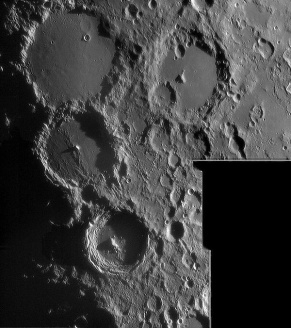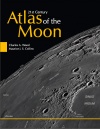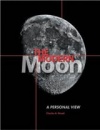Difference between revisions of "May 15, 2004"
| (15 intermediate revisions by the same user not shown) | |||
| Line 1: | Line 1: | ||
__NOTOC__ | __NOTOC__ | ||
=The Golden Triad= | =The Golden Triad= | ||
| − | + | <!-- Start of content --> | |
| − | + | <p align="center"> | |
| − | + | <table width="640" border="0" align="center" cellpadding="6" cellspacing="2"> | |
| − | + | <tr> | |
| − | + | </tr></table> | |
| − | |||
| − | |||
<table border="0" align="center" cellpadding="6" cellspacing="2"> | <table border="0" align="center" cellpadding="6" cellspacing="2"> | ||
| − | + | <tr> | |
| − | + | <td><div align="center"> | |
| − | + | [[File:LPOD-2004-05-15b.jpeg|291x425px|link=[[Media:LPOD-2004-05-15.jpeg]]]] | |
| − | + | </div></td> | |
| − | + | </tr> | |
| − | + | <tr> | |
| − | + | <td colspan="2"><div align="center"> | |
| − | + | <p class="main_sm">Image Credit: [mailto:gmengoli@libero.it Giorgio Mengoli]</p> | |
| − | + | </div></td> | |
| − | + | </tr> | |
| − | + | <table class="story" border="0" bgcolor="#FFFFFF" width="90%" cellpadding="10" align="center"> | |
| − | + | <tr> | |
| − | + | <td><p class="Story" align="center"><b><span class="class">The Golden Triad</span></b></p> | |
| − | + | <p class="story" align="left">In American slang, something is "golden" when it is "supremely favored or fortunate". And that describes the triad of craters near the center of the Moon's face. Ptolemaeus, Alphonsus and Arzachel are golden - or maybe it would be more accurate to say that we observers are supremely favored because such fascinating craters are so favorably placed for our study. In past decades folks who wanted to believe that lunar craters were volcanic would often point to chains of three craters such as this or Purbach, Regiomontanus and Walter, and state that random impact could not have made such triads. More likely, they posited, the craters occur over lines of crustal weakness that controlled volcanic eruptions. We are now confident that crater triads, like nearly all lunar craters, were formed by impacts. This gorgeous image by Giorgio Mengoli illustrates how impact craters can be altered by later activity. The rim of Ptolemaeus, for example, has been nearly shredded by projectiles ejected during the impact that formed the Imbrium basin. Notice how all the elongated valleys in this are are radial to Imbrium. And the interior of Ptolemaeus has obviously been filled with some material, hiding all but subtle outlines of the rims of covered craters. The central ridge of Alphonsus is apparently Imbrium ejecta and rilles and dark halo craters hide in the shadows. Arzachel is the least modified of the Triad, possessing wreath-like terraces and a large central peak, off-center for some reason. But even it, as we saw [[March_29,_2004|earlier]], has been modified by small impact craters and rilles upon its volcanic? floor. Giorgio, thanks for this luscious image!</p> | |
| − | + | <p class="story" align="left"><b>Technical Details:</b><br> | |
| − | + | April 27, 2004. Takahashi cassegrain Mewlon 210 - 8" F/11.5 (Click [[media:LPOD-2004-05-15b.jpeg|here]] for a larger view).</p> | |
| − | + | <p class="story"><b>Related Links:</b><br> | |
| − | + | [http://digilander.libero.it/gm2/home.htm Giorgio's Home Page] | |
| − | + | <br> | |
| − | + | [[March_3,_2004|Ptolemaeus by Zerbe]] <br> | |
| − | + | [[March_24,_2004|Alphonsus by Ranger 9]]<br> | |
| − | + | [[March_29,_2004|Arzachel by Keene]]</p> | |
| − | + | <p><b>Yesterday's LPOD:</b> [[May 14, 2004|North Polar Rays]] </p> | |
| − | + | <p><b>Tomorrow's LPOD:</b> [[May 16, 2004|Asteroid 3251?]] </p> | |
| − | + | </tr> | |
| − | + | </table> | |
| − | + | <hr> | |
| − | + | <p align="center" class="main_titles"><b>Author & Editor:</b><br> | |
| − | + | [mailto:tychocrater@yahoo.com Charles A. Wood]</p> | |
| − | + | <!-- Cleanup of credits --> | |
| − | + | <!-- Cleanup of credits --> | |
| − | + | <!-- Cleanup of credits --> | |
| − | + | <!-- Cleanup of credits --> | |
| − | + | <!-- Cleanup of credits --> | |
| − | + | <!-- Cleanup of credits --> | |
| − | + | <!-- Cleanup of credits --> | |
| − | |||
| − | |||
<p> </p> | <p> </p> | ||
| − | + | <!-- End of content --> | |
| − | + | {{wiki/ArticleFooter}} | |
| − | ---- | ||
| − | |||
| − | |||
Latest revision as of 19:17, 7 February 2015
The Golden Triad
Image Credit: Giorgio Mengoli |
|
The Golden Triad In American slang, something is "golden" when it is "supremely favored or fortunate". And that describes the triad of craters near the center of the Moon's face. Ptolemaeus, Alphonsus and Arzachel are golden - or maybe it would be more accurate to say that we observers are supremely favored because such fascinating craters are so favorably placed for our study. In past decades folks who wanted to believe that lunar craters were volcanic would often point to chains of three craters such as this or Purbach, Regiomontanus and Walter, and state that random impact could not have made such triads. More likely, they posited, the craters occur over lines of crustal weakness that controlled volcanic eruptions. We are now confident that crater triads, like nearly all lunar craters, were formed by impacts. This gorgeous image by Giorgio Mengoli illustrates how impact craters can be altered by later activity. The rim of Ptolemaeus, for example, has been nearly shredded by projectiles ejected during the impact that formed the Imbrium basin. Notice how all the elongated valleys in this are are radial to Imbrium. And the interior of Ptolemaeus has obviously been filled with some material, hiding all but subtle outlines of the rims of covered craters. The central ridge of Alphonsus is apparently Imbrium ejecta and rilles and dark halo craters hide in the shadows. Arzachel is the least modified of the Triad, possessing wreath-like terraces and a large central peak, off-center for some reason. But even it, as we saw earlier, has been modified by small impact craters and rilles upon its volcanic? floor. Giorgio, thanks for this luscious image! Technical Details: Related Links: Yesterday's LPOD: North Polar Rays Tomorrow's LPOD: Asteroid 3251? |
Author & Editor:
Charles A. Wood
COMMENTS?
Register, Log in, and join in the comments.




